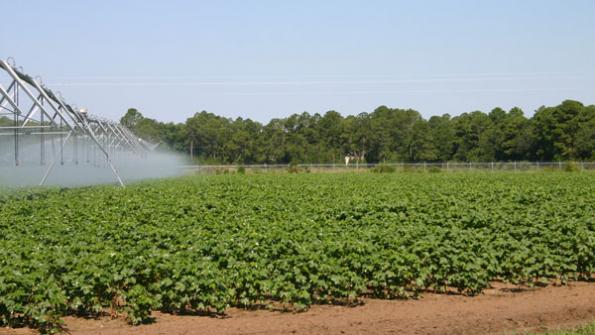July 22, 2013

After a prolonged period of wet weather, North Carolina cotton is benefitting from some sunny, hot weather.
But in most areas of the state, the crop has some catching up to do. In some cases, the crop may never manage this.
To add insult to injury, this late crop will likely be susceptible to late season insects for a considerable period going forward.
Plant bugs
We think the movement of plant bugs from wild hosts and corn into cotton may increase during the coming weeks if our present hot, dry weather continues.
Perhaps an additional consideration with plant bugs this year is the low total number of squares for mid-July in many fields. Here we’re not talking about low square retention rates, but the limited square development given how far this crop is behind.
This makes keeping available squares on the plants more important than in most other years when moderate levels of square loss could be tolerated.
This year, it could be more important than most to protect squares and young bolls from insects, including plant bugs, stink bugs and bollworms.
Stink bugs
We have a number of cotton fields that are on the lush side due to prolonged wet weather, with squares and young bolls few and far between.
In our cotton scouting school in the Greene County area last week, brown stink bugs seemed to be quite abundant. This would not be the year or time to overlook stink bug damage to young bolls.
Keeping bug damage low
We feel that using the dynamic threshold, which stresses a 10 percent internal damage threshold for quarter-sized bolls during weeks 3 through 5 of the bloom period, will keep stink bug damage low and also not waste unnecessary insecticide applications.
You can find much more detailed information about stink bug identification, damage symptoms, scouting procedures, threshold use and much more by reading and using our new stink bug decision app.
The development of this app was supported by funding from our North Carolina Cotton Producers State Support Committee via Cotton Incorporated.
The use of this app, like any stink bug scouting procedure, requires scouts to make at least weekly boll assessments for internal damage to receive the most benefit from this app.
Bollworms – where are you?
Dominic Reisig conducted some corn ear assessments this past week (see Earworm populations low in corn: What does that mean for cotton, soybeans). Corn earworm infestation levels on ear tips in these assessments were very low compared with other years.
Additionally, it appears the progress of this generation is more than a week behind schedule, thus hopefully delaying our major corn earworm moth flights into cotton, soybean and other crops this year — perhaps one small plus in an otherwise tough year agronomically.
Finally, light trap counts in Scotland County indicate our major bollworm moth flight had not begun in southern North Carolina as of this past Wednesday.
Other cotton pests
Calls about spider mites have subsided somewhat, but mites still seem to be hanging around, even if mostly at low levels.
This seems like good plant conditions for cotton aphids, with at least one population in eastern North Carolina being difficult to control with chloronicotinoids.
If control difficulties are found after treating with Admire Pro, Centric, Belay or Intruder, alternatives such as Carbine and Transform have different modes of action and should be used for possible subsequent sprays.
Remember that aphids are nice, juicy, essentially immobile targets for biocontrol in North Carolina, so if the rounded aphid mummies or the fungus is found, an insecticide will probably not be needed in many cases.
Like what you’re reading? Subscribe to Southeast Farm Press Dailyand get the latest information right to your inbox!
More from Southeast Farm Press
Irrigation scheduling tools seen as a key to conserving water in southwest Georgia
Sunbelt Expo Field Day spotlights latest research, products
Kudzu bugs rapidly becoming challenge in Virginia soybeans
Some Alabama crops in make-or-break situation
You May Also Like




